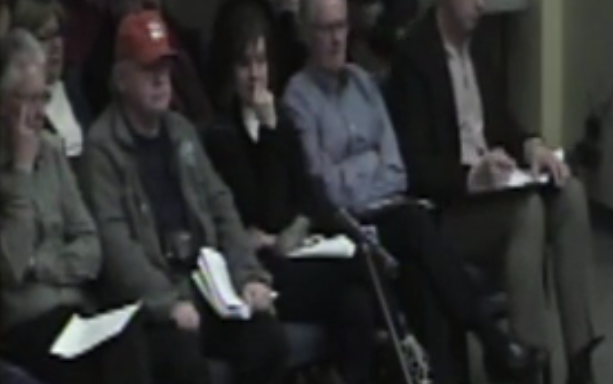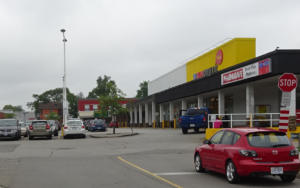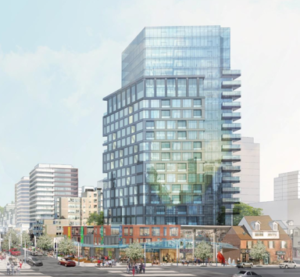 By Rick Goldring
By Rick Goldring
February 1st, 2018
BURLINGTON, ON
The Gazette has published all but one of the eight State of the City addresses. Links to those addresses are set out at the end of this unedited address.
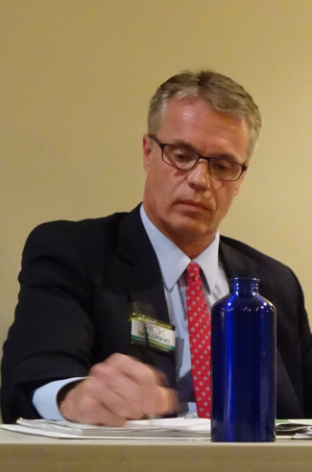
Rick Goldring during a 2014 election debate.
Good morning everyone. I would like to offer a warm welcome to the annual Mayor’s State of the City Address.
Thank you all very much for joining me this morning. It means a lot to have so many people here.
I would like to recognize the Burlington Chamber of Commerce for hosting this event, as they have done for many decades.
In particular, thank you to Keith Hoey and his team, Marty Staz and the board of directors, along with the volunteers and membership. Together, you facilitate many different programs and events throughout the year that helps bring the community together and build relationships that are essential to the prosperity of business in Burlington.
And thank you to all of today’s sponsors.
Congratulations to Bell for another successful “Bell Let’s Talk Day”. Your efforts since 2010 are making a significant impact in de-stigmatizing mental illness.
Before I commence my remarks, I do want to comment on the format this year.
In preparation for this year’s state of the city address, I took a look at last year’s event and watched and listened to myself for the full 45 minute speech. That was very hard work. My team and I decided to break up the long winded 45 minute speech by shortening the formal speech and then breaking into an interview with Tim Caddigan, Senior Director of Programming from Cogeco asking me some questions which will include questions from a few of you who are here this morning.
You all have a question card at your table. If you could please use it to write down your questions; there will be staff going around collecting these cards right after my speech, during a video presentation.
My colleagues from Burlington City Council are with us today. I am proud to work alongside these men and women who are deeply committed to our city.
Please welcome councillors Rick Craven, Marianne Meed Ward, John Taylor, Jack Dennison, Paul Sharman and Blair Lancaster.
Our City Manager James Ridge is here, along with many staff from the city today. I am proud of the dedicated, competent and caring staff working effectively every day to make this city the best it can be.
I am very pleased to welcome our regional Chair Gary Carr, Oakville Mayor Rob Burton, Halton Hills Mayor Rick Bonnette and Milton Mayor Gord Krantz. It is great working with you as we build strong communities and a prosperous region at Halton Regional Council.
It is a privilege and an honour to serve as Mayor of Burlington.
Each day I reflect on how grateful I am for everything that I have in my life. I am thankful for the education I have had growing up in Burlington.
I am thankful for my family, especially my wife Cheryl who is here with me this morning.
I firmly believe that we should all be grateful for where we live, whether it is Burlington, Oakville, Milton, Halton Hills or Hamilton. These are all great communities.
Now I have been inclusive and respectful of our neighbouring municipalities, I am going to focus on Burlington!
Best Mid-Sized City in Canada
If you haven’t heard, MoneySense Magazine has recognized Burlington as the best mid-sized city in Canada five years in a row.
We are the safest region in Canada. Burlington alone saw a thirty-one percent drop in crime over the last five years.
We have a healthy and resilient economy. Last year, our city added over twelve hundred jobs, an increase of eighty-eight percent year over year.
We continue to maintain a higher than average percentage of jobs to population ratio. We have the highest ratio in Halton Region, even higher than Waterloo Region or the cities of Markham, Brantford and Hamilton.
A significant number of Burlington families are financially stable.The latest census data shows that Burlington has an average household income that is twenty-five percent greater than the provincial average.
Our unemployment rate nationally is lowest it has been in forty years at five-point-seven- per cent and our local unemployment rate is a percent below that at four-point-six per cent.
Our residents are well educated. Seventy-three per cent of us have post-secondary education and the average rate of residents holding a University degree in Burlington is higher than the provincial average.
We live longer. The life expectancy in Halton Region is about seven to eight per cent longer than that of provincial average. We don’t just live longer; we live longer with lower incidences of morbidity – the incidence of disease and illness – than the provincial average.
The percentage of Burlington residents whose income is below the Low-Income threshold is five-point seven per cent versus the province as a whole at nine-point-eight per cent.
Despite the fact that Burlington is flourishing overall we need to recognize that there are people in our community who are struggling. No city is immune to social issues like mental illness, addiction, accessibility, isolation, women and children abuse, unemployment, underemployment and poverty, including some of our youth and seniors and many others.
We are fortunate that in addition to the great work being done through Halton Social Services and Housing, there are not-for-profit agencies, service clubs and faith communities that reach out and fill some of the voids.
Burlington Economic Development Corporation
In 2017, we saw significant growth in Burlington’s economy. On top of adding over twelve hundred jobs, we saw a significant reduction in the Burlington Office vacancy rate.
Some of the new companies we welcomed to Burlington include Amec Foster Wheeler, an international energy and industrial company, A-Z-X sport, a promotional products manufacturer and distributor and Cardon Rehab, an innovator in the physical therapy equipment business.
2017 was a year of expanding the supports available to support businesses to innovate and grow in Burlington.
Crossroads Media Centre is an example of this, it was recently acquired by a private investor. In the coming months, the Centre will transform to become a multi-use facility offering state-of-the-art television studios and digital media facilities.
The Halton Hive, Burlington’s first co-working space and business centre for entrepreneurs, startups, and digital content creators, has relocated to the Centre and will be integral to the re-imagining of the space and the growth of a vibrant community of complementary businesses. This is an exciting development for Burlington and Halton Region, with more announcements to follow soon.
Last year, when I stood before you for the 2017 State Of The City address, I announced the signing of a lease for Burlington’s Innovation Centre, TechPlace just around the corner at 5500 North Service Road and a few months later in June, the doors were open, and they were in business.
Today, I’m excited to tell you how TechPlace has thrived beyond our expectations.
First, I want to share with you how TechPlace came to be. In a 2016 report, the Ontario Chamber of Commerce identified a critical gap in Canada’s business growth strategy. Forty per cent of new jobs in Canada come from companies less than five years old, but they failed short of growing into large organizations.
It was clear that in Burlington we needed to do our part by nurturing innovation and entrepreneurship. Not just in Burlington but the GTA west region leveraging relationships within Halton and Hamilton. After all, the business community does not look at municipal boundaries, they look at regional markets.
Today, TechPlace is operating at full capacity with businesses on a waitlist.
Innovative technology companies from Dubai, Finland, Kitchener-Waterloo, Mississauga and Burlington have been accepted into TechPlace’s Launch Pad program and are thriving in their new environment.
For example, in October, representatives from BEDC met with a company named Orfer – A leading robotics manufacturing and robot automation company based out of Finland. Orfer was looking to establish a North American headquarters, and the company had met with many municipalities across the GTHA. After just one meeting with the BEDC team, Orfer decided TechPlace was the new home for their soft landing. And Burlington is the place for their new North American headquarters.
Service Path is yet another success story. This company helps organizations automate their sales processes and reduce the time to quote for complex services. This industry that didn’t exist ten years ago is now a forty-two billion dollar industry. Since settling into TechPlace, the company has hired more staff and is looking to expand within Burlington.
This is precisely the kind of activity we anticipated. Fostering new partnerships within the startup ecosystem and creating a destination for new and growing technology companies to tap into new ideas provides opportunities to network and collaborate.
I want to congratulate everyone at the BEDC for the success of TechPlace. TechPlace is helping to put Burlington and the whole GTA west on the map as a centre for entrepreneurship and innovation.
The BEDC has also been working with key stakeholders to make sure that we have the land we need to attract businesses to Burlington.
In order to support the City’s strategic plan to be a City that Grows, Burlington must make the shift from Greenfield development to redevelopment, intensification and the creation of mixed-use amenity rich employment hubs that meet the needs of today’s and tomorrow’s employers.
We have over one million square feet of land in the development pipeline that will head to the market.
This means one million square feet of land, ready for new industrial, commercial and institutional spaces in Burlington. Having these spaces ready for businesses looking to locate, expand or start-up in Burlington is an important value-add, to the site selection process.
To attract innovative and prosperous businesses and people to our city, the focus will be on developing and leveraging a strong brand that positions Burlington as a highly attractive business location and a place to call home.
Evolving City
Burlington City Council is in the process of finalizing a new Official Plan for the City that is set to see approval in the spring.
There is nothing simple or easy about where we are as a city.
When you pave over farmer’s fields for suburban sprawl; it is relatively easy to take out a piece of paper and plan where roads, parks, schools, retail stores and homes are built. I contrast that with the redevelopment of existing underutilized areas.
Our draft plan outlines the areas where we will grow.
Fifty per cent of Burlington’s one-hundred and eighty-five square kilometres is protected from development. This area includes much of North Aldershot and the area north of the Dundas – 407 corridor that includes Mount Nemo, Kilbride and Lowville. The vast majority of people we talk to want to keep it that way.
Thirty-four per cent of our city is traditional neighbourhoods and it is critically important that we maintain the character and integrity of those neighbourhoods.
Eleven per cent of the city is our employment lands primarily around the QEW-403 corridor. These lands are crucial to our current and future economy and work force providing a variety of career opportunities for Burlington residents.
The remaining five per cent of the city includes the areas around our three GO Stations and our downtown. These are identified for most of the increased population and corresponding job growth.
After decades of Greenfield development of traditional single-family home neighbourhoods, we are now in essence built out.
This is reflected in the 2016 census data that shows Burlington having the lowest population growth in over fifty years.
Between 2011 and 2016, we grew from 176,000 people to 183,000, which works out to an annual growth rate of around point-eight per cent and the vast majority of this increase occurred in the North East part of the city. Excluding this area of the city, our annual growth rate is only point four per cent.
We know that most cities grow over time – this is just natural – but the question is often asked. “How much should we grow by?”
The Conference Board of Canada states a growth rate of one-point-one per cent is optimal and suggests a higher rate if there is a disproportionate seniors’ population.
Why will Burlington’s population increase?
Some of the reason for this is that we are mandated to grow by the province. We know that primarily because of immigration, the population of the GTHA will grow from seven million to ten million people by 2041.
We know that Halton Region will grow from 550,000 people to one million. While Burlington’s 2031 target is quite modest, the 2041 target will be defined in 2019 at Halton Region.
Our Proposed New Official Plan is for the next twenty-five years and beyond.
A stable and growing economy requires a core working age population. Communities with no growth cannot sustain a strong economy as the workforce ages.
Canada is addressing declining birthrates through immigration, and cities must also grow their population to remain economically vital and sustainable. Too little growth constrains the economy; too rapid growth stresses services and infrastructure.
We need to continue to create as much variety in our housing stock as possible and housing will take on different forms that are no longer the traditional detached dwelling.
We will provide opportunities for ageing baby boomers to downsize. It’s critical that the housing supply is increased – to improve affordability for younger residents and so that families are not priced out of our traditional and new neighbourhoods.
Without reasonable growth in our housing stock, real estate prices will increase even more than they are currently and the pressure on school enrollment will be unabated.
Our vision for the areas around our three GO Stations will provide Burlington residents with the benefits of walkable neighbourhoods.
The Aldershot Mobility Hub area is already seeing development. As more people move into the area, there will be an increase in jobs, amenities, stores, restaurants and pubs that everybody can find value from.
And this growth can help lead to that grocery store in the west end that many people have been asking for.
Residents will have access to all day fifteen-minute GO Train Service within seven years and sooner than that we will see fifteen-minutes all-day service provided by Burlington Transit along the Plains Road and Fairview Street Corridor.
And with more people living in the downtown, current businesses will thrive and new businesses such as stores, restaurants and other services will be attracted to move to the downtown.
When I ask people what they like about living or working in the downtown; invariably the answer is “You can walk everywhere.”
You can walk along our waterfront, to the Burlington Performing Art Centre, to the Art Gallery of Burlington and to the new Joseph Brant Museum when it opens as well as to stores, restaurants and cafes.
It’s exciting to think that new developments will have car share and bike share programs. This will result in some residents making the shift and choosing not to have a car or reducing multiple car ownership because they can walk, cycle or take transit for the vast majority of their trips. And, if needed, they can use the car share program for long distance trips or to make larger purchases that don’t happen on a regular basis.
This type of lifestyle is healthier and reduces the carbon footprint. We know this isn’t a lifestyle that will work for everyone, but in time, it will be desirable to many.
Deciding how Burlington will evolve isn’t just about new buildings and where they will go.
We are making an improved commitment to ensure that new development will be architecturally attractive and unique, with a great feel for pedestrians on the street. By doing this, we will be proud of how our city looks and continues to grow.
A publication titled “Intensification: what it is and what it promises” on Neptis Foundation website said this about intensification.
“Intensification is promoted as a way to achieve several benefits.
First, if population growth can be accommodated at higher densities, or within existing urban areas, or both, less Greenfield land will be required for new housing.
Second, research shows that when density increases beyond a certain level, automobile use declines in favour of transit, walking and cycling.
Third, where surplus infrastructure capacity exists in urbanized areas, adding more people to these areas make more efficient use of public urban infrastructure such as water and sewer pipes, as well as soft infrastructures including schools and social services.
In short, development in already urbanized areas plays to the city’s strengths rather than spreading its resources over an ever-wider territory.”
Public Engagement
Building a beautiful and vibrant Burlington is a never-ending marathon. There are always many hurdles to cross as the city will be around much longer than any of us.
Public Engagement is a critical piece of the decision making process for municipalities.
The City of Burlington was named the Organization of the Year by the International Association for Public Participation for applying the “Community Engagement Charter” adopted in 2013. It recognizes our mandate to consult and engage with residents in all matters.
As one judge put it “Employees now ask how to engage — not whether we should or not”.
As I look forward to our continued progress with public engagement, I am inspired by a 2017 lecture given by Bret Stephens of the New York Times to the Lowy Institute in Sydney, Australia titled ‘The Dying Art of Disagreement’.
He suggests that we may be failing in how we deal with disagreement and that disagreement is critical to a decent society.
I want residents to know that Council recognizes the importance of accommodating differences on the many issues that we face as a city. The view is shared that “every great idea is really just a spectacular disagreement with some other great idea.”
To be successful, I am drawn to some simple advice from Bret Stephens of the New York Times that reads
“To disagree well you must first understand well. You have to read deeply, listen carefully, and watch closely. You need to grant people with alternate views moral respect; give people the intellectual benefit of the doubt; have sympathy for people’s motives and participate emphatically with a different line of reasoning. And you need to allow for the possibility that you might yet be persuaded by what has been said.”
We will continue to develop and improve how we connect with residents and engage our community and support discussions around issues with strongly held viewpoints – that is democracy.
Partnerships
In order to build a great city, you need to have great support and great partnerships.
We are fortunate to have that with our federal and provincial representatives.
Last year, we received over eleven million dollars from the Federal and Provincial governments through funding applications for various city projects.
Six million dollars of that was for the Joseph Brant Museum Expansion, which allowed us to break ground for the work that has begun this winter.
Once completed, the museum will expand from the current five thousand square feet to seventeen thousand square feet of barrier free space for gallery displays, interactive programming, the storage of collections and community outreach.
It will also become a destination and a beautiful addition to our waterfront.
We also partnered with the Province of Ontario, the City of Hamilton, Mohawk College and Sustainable Hamilton Burlington to launch the Centre for Climate Change Management at Mohawk College last year.
The centre is the first of its kind at an Ontario college and will help accelerate the region’s transition to a low-carbon economy and support Burlington’s Community Energy Plan, which has already made a significant impact in reducing energy consumption and greenhouse gas emissions.
The partnerships we build with our neighbouring cities and the different orders of government are crucial to the success of Burlington.
As Helen Keller said, “Alone we can do so little, together we can do so much”
Connected City
I mentioned earlier that Halton residents have a higher life expectancy than the rest of the province and the country.
I believe a major contributing factor is the opportunities in Burlington to be mentally and physically active, to be engaged and to build relationships that result in a sense of belonging within our community.
2017 was a banner year for community building and togetherness in Burlington.
In celebration of Canada’s 150th birthday, the city initiated a goal of reaching one-hundred and fifty Love My Hood events. The program was designed to build a healthier Burlington by engaging and empowering residents to come together and host events celebrating their neighbourhoods.
I’m happy to say we surpassed our goal of one-hundred and fifty with one-hundred and fifty-eight Love My Hood events.
This initiative attracted residents of all ages. We had a fourteen-year-old boy who hosted a block party that brought one-hundred neighbours together.
You’re never too young to make an impact and initiate change in our city. Last summer, we opened up a brand new playground at the Bolus Parkette in the Aldershot community.This park was designed by local kids and built by the community members. The playground has created a place for culture and community activities to thrive and has provided a positive sense of place, inclusivity and community.
A special thanks to the McNally Foundation for their tremendous financial support not just for the playground but also the journey that got us there.
In August last year, the new Michael Lee Chin and family patient tower opened which is a major milestone in the redevelopment of Joseph Brant Hospital. The renovations to the original tower of the hospital will continue this year.
This past November, Burlington’s Carpenter Hospice broke ground on a significant capital redevelopment that will see the construction of a new state-of-the-art resident wing and a new wellness outreach centre that will extend the Carpenter Hospice care into the community.
I am proud to say that I am the Honorary Chair of the capital campaign for the Carpenter Hospice’s Making Room Redevelopment Project.
Thanks to the generous contributions from donors over the last decade, Carpenter Hospice has over three million dollars saved, and now it’s up to us, the community, to raise three million dollars more to reach the goal of six million.
I know I can count on the support and generosity of residents and businesses in our city to make this happen because when there is a need, our community comes together like no other.
Ladies and gentleman, these are just some of the reasons why Burlington continues to be the best mid-sized city in Canada.
This concludes my formal remarks. While Tim Caddigan and I get comfortable on the chairs, please turn your attention to the video.
Previous State of the City addresses:
State of the City 2011
State of the City 2012
State of the City 2013
State of the city 2015
State of the City 2016
State of the City 2017
The Gazette has published all but one of the eight State of the City addresses.

 By Staff
By Staff
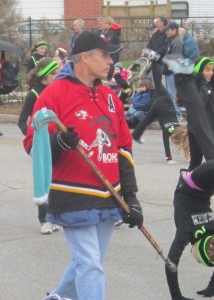

















 Tyler LEACH (33) of Oakville has been charged with:
Tyler LEACH (33) of Oakville has been charged with:



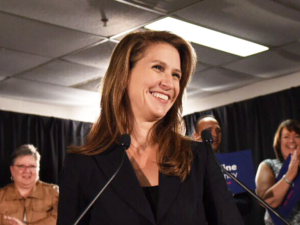

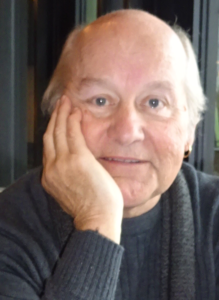 Ray Rivers writes weekly on both federal and provincial politics, applying his more than 25 years as a federal bureaucrat to his thinking. Rivers was once a candidate for provincial office in Burlington. He was the founder of the Burlington citizen committee on sustainability at a time when climate warming was a hotly debated subject. Tweet @rayzrivers
Ray Rivers writes weekly on both federal and provincial politics, applying his more than 25 years as a federal bureaucrat to his thinking. Rivers was once a candidate for provincial office in Burlington. He was the founder of the Burlington citizen committee on sustainability at a time when climate warming was a hotly debated subject. Tweet @rayzrivers
 Burlington has three locations – two Walmart locations, 4515 Dundas St. and 2065 Fairview St. and Longo Brothers Fruit Markets at 2900 Walker’s Line.
Burlington has three locations – two Walmart locations, 4515 Dundas St. and 2065 Fairview St. and Longo Brothers Fruit Markets at 2900 Walker’s Line.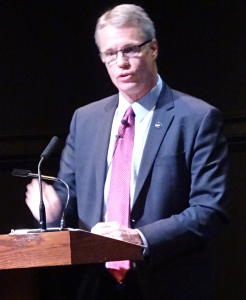
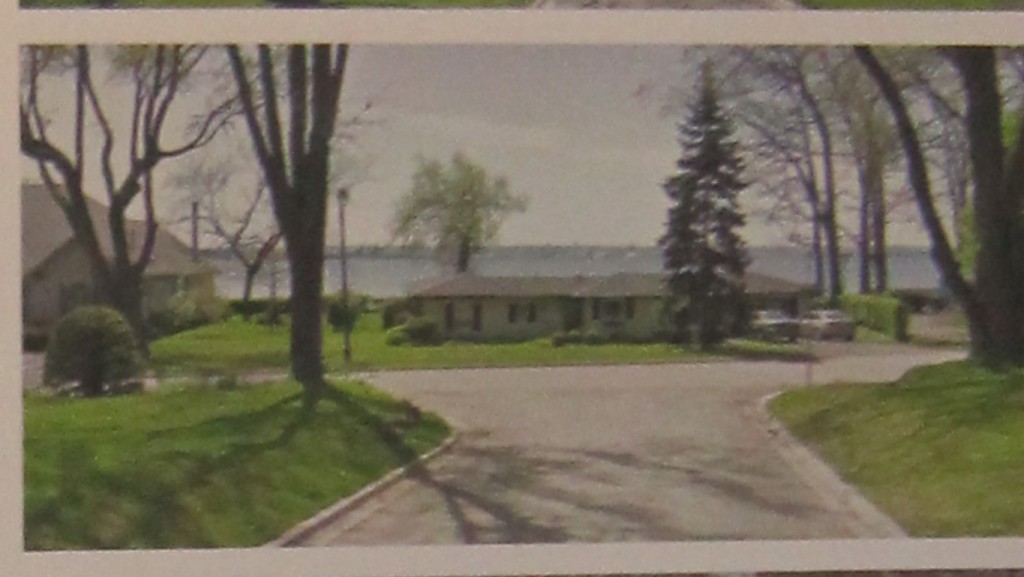
 Stuart Miller, Director of Education for the Board said: “Specifically, this funding will ensure an improved learning environment for students transitioning into new spaces. Our integration committees have been key to coordinating this important transition for Burlington students. This process is being led by our experienced staff, with input and support from dedicated parents.”
Stuart Miller, Director of Education for the Board said: “Specifically, this funding will ensure an improved learning environment for students transitioning into new spaces. Our integration committees have been key to coordinating this important transition for Burlington students. This process is being led by our experienced staff, with input and support from dedicated parents.”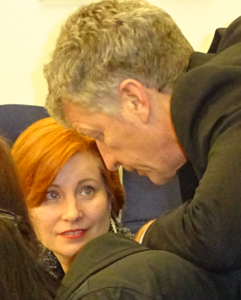
 At approximately 7:50 pm, three male suspects entered the bank and approached the tellers. One of the suspects brandished a handgun, while the other two assaulted the tellers and demanded money. The bank employees complied and the suspects made off with an undisclosed amount of monies.
At approximately 7:50 pm, three male suspects entered the bank and approached the tellers. One of the suspects brandished a handgun, while the other two assaulted the tellers and demanded money. The bank employees complied and the suspects made off with an undisclosed amount of monies.
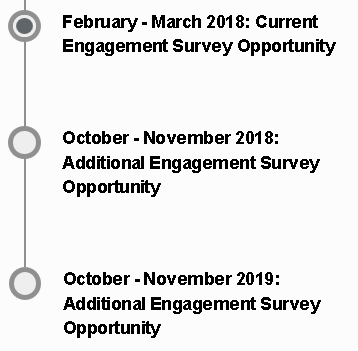 From February 5th through to March 9th, 2018, parents/guardians with children in the Halton District School Board, students, staff and Halton community members are invited to complete the survey on line.
From February 5th through to March 9th, 2018, parents/guardians with children in the Halton District School Board, students, staff and Halton community members are invited to complete the survey on line.
 His Searching for Marceau is being done:
His Searching for Marceau is being done:

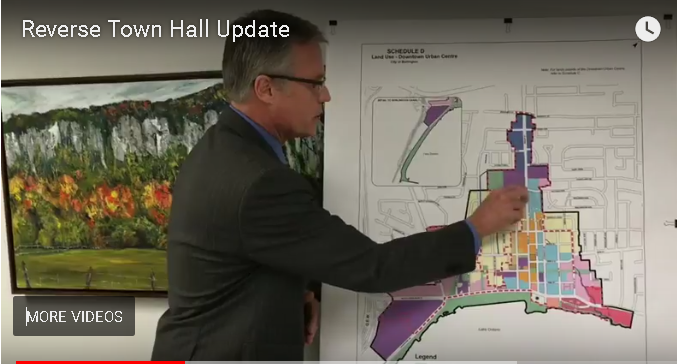
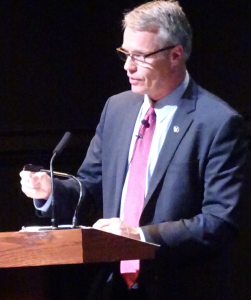 We have seen this before in our Mayor – he comes across something that appeals to him and makes mention of it but he doesn’t seem to absorb what he has read.
We have seen this before in our Mayor – he comes across something that appeals to him and makes mention of it but he doesn’t seem to absorb what he has read.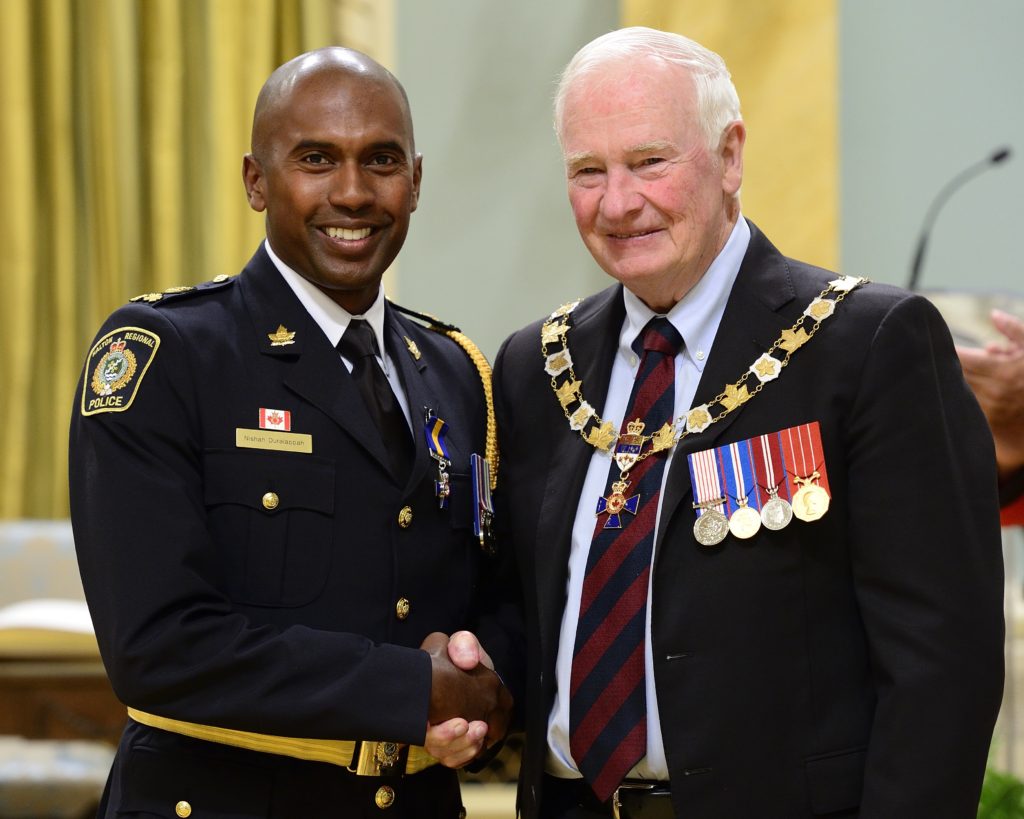

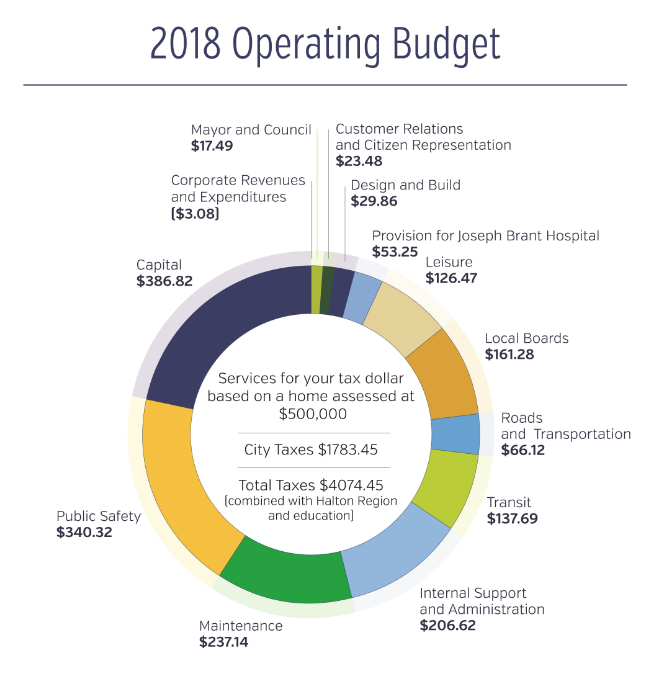 Burlington tax increases have been hovering at the 3 to 4% annual tax increases for much of the two terms the current council has been in office.
Burlington tax increases have been hovering at the 3 to 4% annual tax increases for much of the two terms the current council has been in office.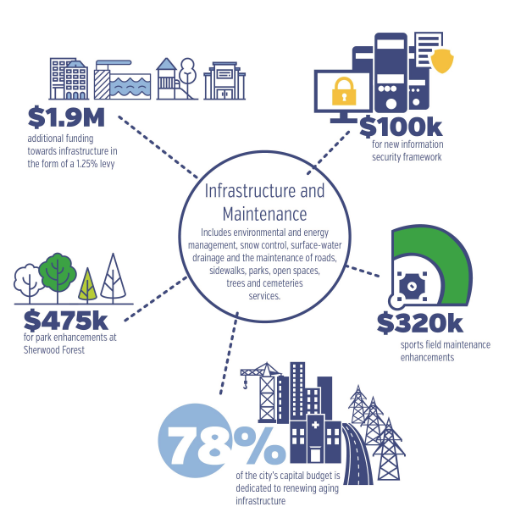 • Investing in infrastructure and maintenance – in accordance with the city’s Asset Management Plan, the dedicated infrastructure levy has been increased by 1.25 per cent or $1.9 million. Of the $160.1 million collected through the tax levy, $34.72 million will fund the capital program and renewing Burlington’s aging infrastructure.
• Investing in infrastructure and maintenance – in accordance with the city’s Asset Management Plan, the dedicated infrastructure levy has been increased by 1.25 per cent or $1.9 million. Of the $160.1 million collected through the tax levy, $34.72 million will fund the capital program and renewing Burlington’s aging infrastructure.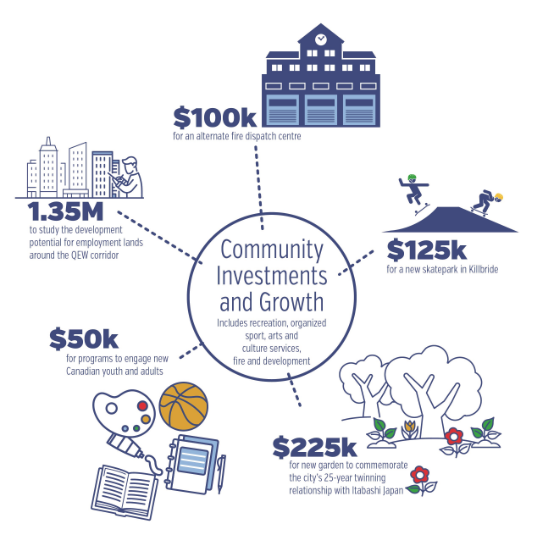 • Community investment and growth – to provide an additional investment of $320,000 to enhance the maintenance of sports fields.
• Community investment and growth – to provide an additional investment of $320,000 to enhance the maintenance of sports fields.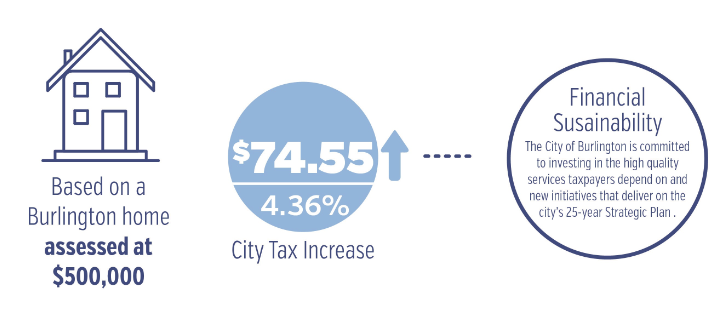 • Financial sustainability – Burlington’s operating budget is committed to ensuring the city has competitive property taxes. Since 2011, overall tax increases in Burlington have averaged 1.9 per cent. In a comparison of property taxes in municipalities in the Greater Toronto and Hamilton Area, Burlington’s property taxes are the third-lowest for a residential single-family detached home.
• Financial sustainability – Burlington’s operating budget is committed to ensuring the city has competitive property taxes. Since 2011, overall tax increases in Burlington have averaged 1.9 per cent. In a comparison of property taxes in municipalities in the Greater Toronto and Hamilton Area, Burlington’s property taxes are the third-lowest for a residential single-family detached home.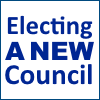 The number of votes does count – providing there is a choice of candidates.
The number of votes does count – providing there is a choice of candidates.
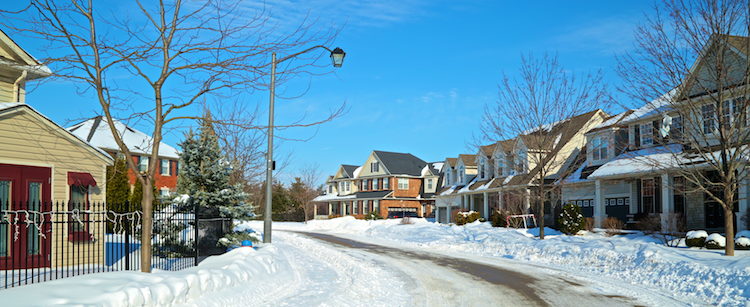
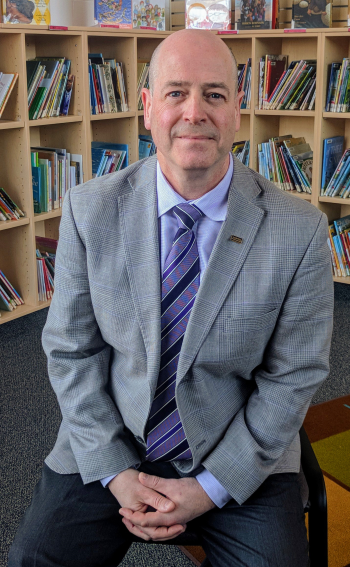
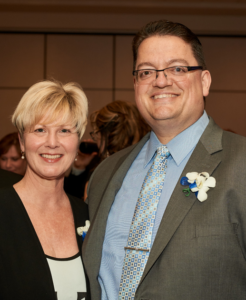

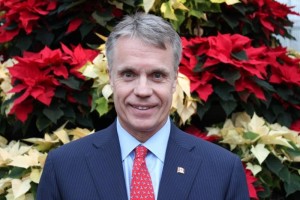
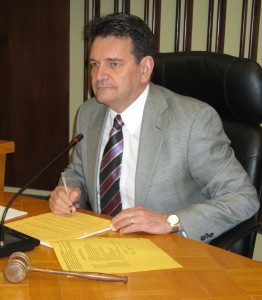
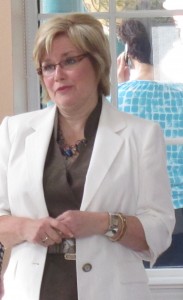

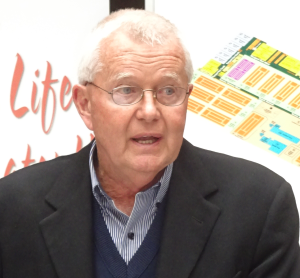
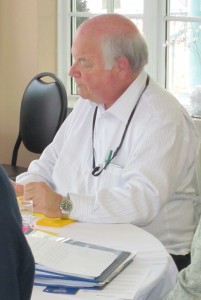
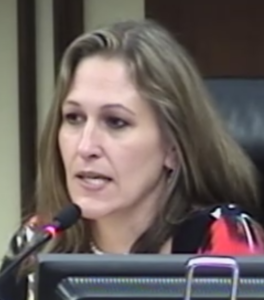
 Joe Gaetan attended and delegated at the meeting of January 23,2018, and attended the Council meeting of January 29,2018. While a resident of Ward 2 in a Tall Building, he does not live downtown.
Joe Gaetan attended and delegated at the meeting of January 23,2018, and attended the Council meeting of January 29,2018. While a resident of Ward 2 in a Tall Building, he does not live downtown.